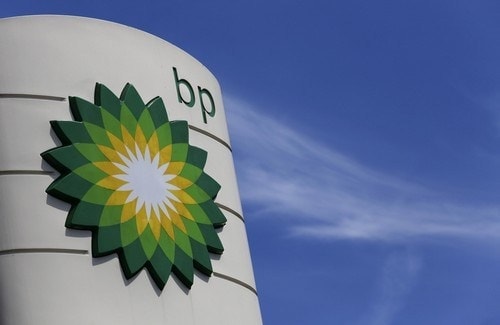The Marketing mix of British Petroleum analyses the 4Ps of British Petroleum’s marketing strategy, which includes the Product, Price, Place, and Promotion of British Petroleum. British Petroleum, commonly called BP, is a multinational corporation that deals in the gas and oil industry. This public limited company is among the seven leading companies in the world associated with this industry. As the name refers, it is of British origins and was founded in 1908, but it was given its present title of British Petroleum in 1954. The company serves a worldwide worldwide area and has its headquarters in London. It became the first company in 1965 to find oil reserves in the North Sea. It faces stiff competition from other companies, and its chief competitors in the oil industry are as follows-
- Chevron Corporation
- Royal Dutch Shell plc
- Exxon Mobil Corporation
About British Petroleum
- Type: Oil and gas company
- Industry: Energy
- Founded: 1908
- Founder: William Knox D’Arcy
- Headquarters: London, England
- Area served: Worldwide
- Key people: Bernard Looney, CEO, and Helge Lund, Chairman
- Number of employees: Over 67,600
Table of Contents
British Petroleum Product Strategy
British Petroleum is a vertically integrated firm in refining, production, exploration, distribution, marketing, trading, power generation, and petrochemicals related to the gas and oil industry. It has renewable-energy operations in wind power and biofuels. BP is one of the major international companies that provide lubricants that enable the movement of engines, energy for light and heat, fuel like petroleum for transportation, and petrochemical products necessary for making items like paints and packaging. The product and service portfolio of British Petroleum includes the following:
- Petrochemicals
- Motor fuels, especially Aviation fuels
- Petroleum, including Natural gas
- Services like providing fuel cards that have payback points
British Petroleum (BP) offers a diverse product mix, primarily focusing on the gas and oil industry. The new Product, Mix of Michelin in 2023, is as follows (Source)
- Petrochemicals: These are essential for manufacturing various products like paints and packaging.
- Motor Fuels: BP provides specialized fuels, particularly aviation fuels.
- Petroleum and Natural Gas: These core products are integral to BP’s operations.
- Service Offerings: BP provides services like fuel cards with payback points, adding value to consumer interactions.
- Renewable Energy Operations: BP is also involved in wind power and biofuels, reflecting its foray into sustainable energy solutions.
British Petroleum Place Strategy
British Petroleum has taken various steps to increase its worldwide operations and has a hold in nearly seventy countries. It has 15 partly and wholly owned refineries, with an estimated 3.3 million barrels/day production and reserves of 17.18 billion barrels.
Distribution is a significant factor for any company as it can maintain and increase its consumer base. Their distribution networks are very efficient and include 17,200 service stations in the global market, and out of these, 7,000 are located in the United States and 1,100 in the United Kingdom.
Its service stations are in league with many convenience stores for better This company’s company’sults. The retail company has helped with easy distribution policies, leading to its growth in the international market. British Petroleum has nearly 79,800 employees, and all its operations can be divided into two segments: Downstream and Upstream. It is involved in onshore terminals, offshore gas and oil fields, and pipeline networks for transporting gas and oil.
British Petroleum’s (BP) place strategy, which refers to how it positions itself in the market and distributes its products, can be summarized in the following points:
- Global Presence: BP maintains a significant international presence in over 70 countries. This widespread geographic footprint enables BP to access diverse markets and manage the risks associated with reliance on a single region.
- Strategic Retail Network: The company operates a vast network of service stations, offering fuel, convenience retailing, and other services. These retail outlets are strategically located to maximize customer accessibility and convenience.
- Partnerships and Alliances: BP often engages in partnerships and alliances with local entities to strengthen its market position. This approach facilitates entry into new markets and enhances operational efficiency through local expertise.
- Investment in Infrastructure: BP invests heavily in developing and maintaining a robust infrastructure, including refineries, pipelines, and shipping capabilities. This infrastructure is crucial for efficient supply chain management and reliable product delivery.
- Digital and Technological Integration: Embracing digital technologies, BP integrates innovative solutions in its distribution and retail networks. This includes digital platforms for supply chain management and customer engagement, enhancing efficiency and customer experience.
British Petroleum Pricing Strategy
British Petroleum has decided to follow a pricing policy suitable to everyone linked with its company to have steady revenue growth. Moreover, in petroleum and petrochemicals, the price is government-regulated. So, government regulations significantly impact the final pricing of the end products. The company is making disciplined choices for finance as it is trying to increase its free cash flow to become resilient to changing pricing policies.
British Petroleum undertakes periodic revaluations of markets and changes its prices accordingly. Its competitors also play a significant role in determining its prices, as the company does not want to go overboard and wants its prices to remain at par with its competitors. Its pricing policies are made in dollars, so it dramatically impacts countries whose currency rate against dollars is low.
British Petroleum’s pricing strategy reflects a multifaceted approach that balances market dynamics, competitive positioning, and customer value. Here’s an overview:
- Market-Based Pricing: BP employs a market-based pricing strategy, adjusting prices in response to global oil market fluctuations and regional economic conditions. This approach ensures competitiveness and relevance in different markets, aligning with the prevailing supply and demand dynamics.
- Competitive Benchmarking: BP closely monitors competitor pricing strategies to ensure its offerings remain competitive. This benchmarking approach helps BP position itself strategically within the market, attracting and retaining customers by offering comparable or superior value.
- Dynamic Pricing Models: Leveraging advanced data analytics, BP employs dynamic pricing models at its retail outlets. Prices of fuel and other commodities are frequently adjusted based on local market conditions, competitive pricing, and consumer demand patterns, optimizing revenue and market share.
- Value-Based Pricing for Advanced Products: For specialized products and services, such as advanced fuels and lubricants with unique features or environmental benefits, BP adopts a value-based pricing approach. This strategy sets prices based on the perceived value these products offer customers, such as higher efficiency or lower emissions.
- Geographical Pricing Strategies: Recognizing the diversity of its global market, BP adopts different pricing strategies in other regions. This geographical differentiation considers local economic conditions, regulatory environment, and purchasing power, ensuring price optimization in each market.
- Strategic Discounts and Loyalty Programs: BP implements strategic discounting and loyalty programs to attract and retain customers. These programs often include discounts, rewards, and promotional offers, enhancing customer loyalty and encouraging repeat business.
BP’s pricing strategy is a sophisticated blend of market responsiveness, competitive awareness, and customer-centric approaches. By continuously adapting its pricing models, BP navigates the complexities of the global energy market and positions itself as a customer-focused, competitive player in the industry.
British Petroleum Promotion Strategy
To adhere to its goal of providing a long-term commitment to all its investors and customers, British Petroleum has decided to pursue an active marketing policy. It has adopted a progressive approach and has made a deal with Ford to make hydrogen vehicles that will prove eco-friendly. The company has built fuel stations for hydrogen-run cars in various places to reduce air pollution.
Under its innovative schemes, it has become a participant in Going Green. Hence, it now stores all its gasoline in double-skinned tanks to prevent leaks and spills. It has also committed itself to taking responsibility for the earth’s natural resources by trying to develop energy sources with lower carbon emissions.
BP is a brand recognized globally, and for its promotion, the company has posted various ads on hoardings, and commercials are also shown on television and online sites. This will increase its product visibility and lead to an increase in brand value.
Some Recent Video ads and Print ads of British Petroleum are:
Our transformation | Who we are | Home (bp.com)
Liked this post? Check out the complete series on Marketing Mix

